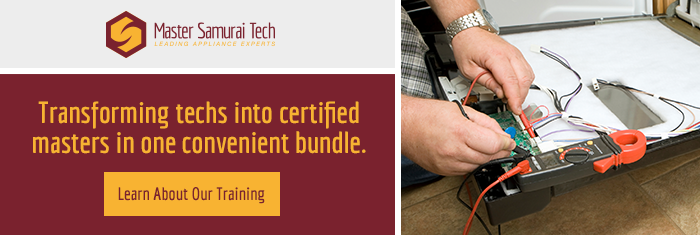|
Professional Appliantologists mark the seasons by the mix of service calls we get. We’re just now coming out of refrigerator season and getting into the thick of oven season. Every year, in the few days leading up to Thanksgiving Day, I can always count on a ton of last-minute, panicked service calls.
“Why is that, Samurai?” you ask.
Well, I’ll tell you. For some reason, people always wait until the last few days before Thanksgiving Day to run the self-clean feature on their oven. Some folks may be thinking the oven should be clean before they cook the communal turkey in it. Others may be anticipating the meddlesome mother-in-law oven inspection. The problem is not “why” you run the self-clean, but “when.” Lemme explain…
During self-clean, the temperatures inside the oven cell can exceed 900F. This is very stressful on the oven’s sensor, door lock assembly, and electronic control board. If anything is on the verge of breaking, it will usually happen during the self-clean cycle. This means that if you think you’re going to run the self-clean cycle in your oven, don’t wait until a few days before before Thanksgiving Day, when you’ll need it to cook that big turkey for a house full of guests, do it now! Then, if something does break in the oven, you’ll have time to get it repaired and won’t end up in a last-minute panic trying to get your oven fixed.
According to Rob Marriott, National Technical Manager for Dacor, a manufacturer of high-end ranges and ovens, “If you’re going to use the self-clean feature, use it a lot or don’t use it at all.” The reason for this is that the most common thing to fail in an oven during self-clean is the door lock assembly. On many modern ovens, the door lock assembly has a little motor that locks and unlocks the door. This motor is controlled by the oven’s electronic control board (the control panel with the digital display). If this motor isn’t used on a regular basis, the accumulated grease that collects in the motor during normal use will coagulate and harden during self-clean and bind the motor so that it can’t unlock the door.
The oven temperature sensor is also stressed during self-clean and is the second-most common thing to fail during or after running the self-clean cycle. Less commonly, yet still prevalent, the oven’s electronic control board can fail due the extra heat it receives during self-clean.
Personally, we never run the oven self-clean cycle at the Samurai’s dojo. But, I understand there are lots of valid reasons why someone would want to, two of which I mentioned above. So, if you’re planning on running the self-clean in your oven, here are some…
|

